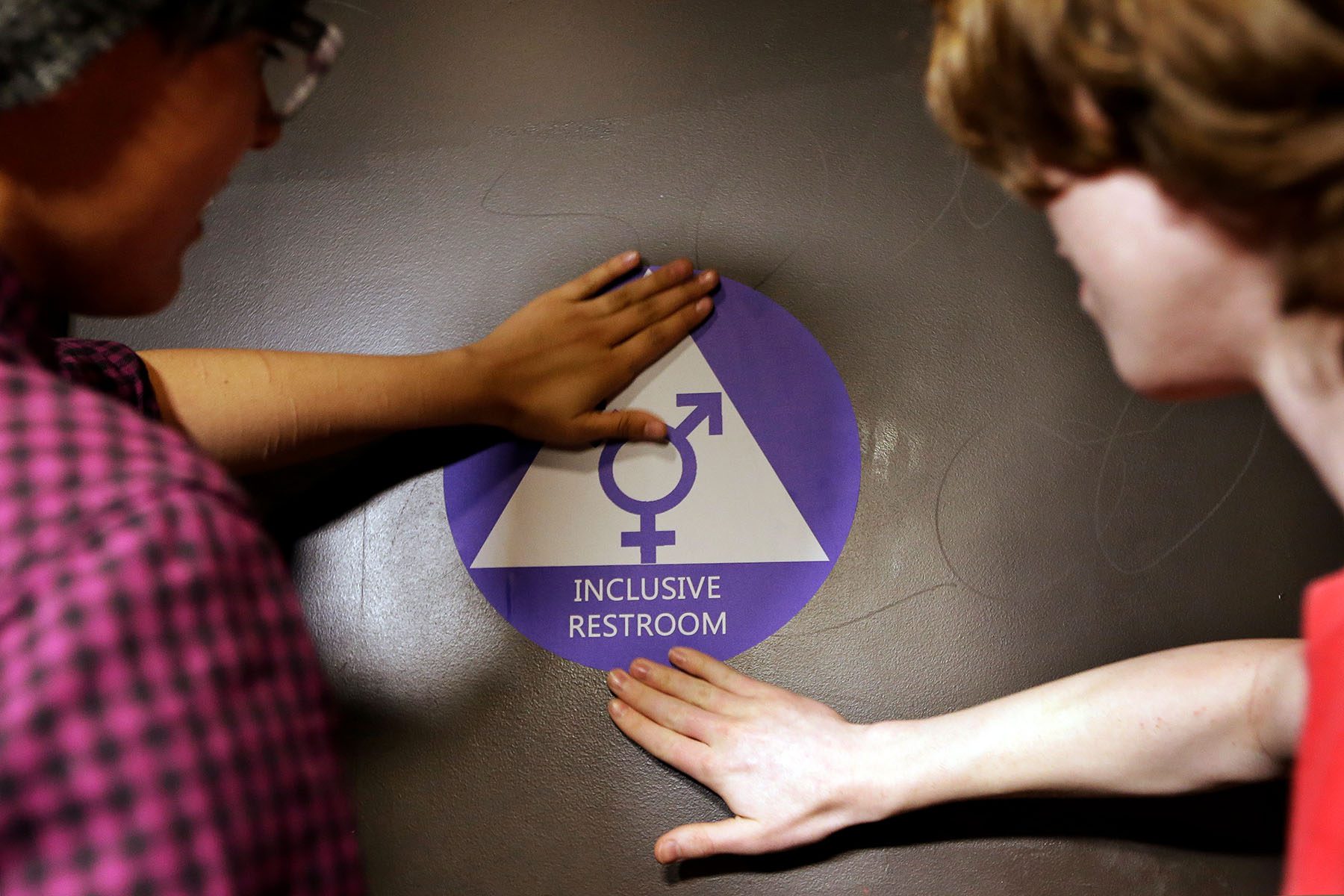California education officials are examining how to increase the number of gender-neutral bathrooms in schools, potentially affecting millions of students in the biggest move to increase such facilities in the country.
Tony Thurmond, the state’s superintendent of public instruction, announced in November plans to form a committee of students, educators, policymakers and advocacy groups to explore ways to increase gender-neutral bathrooms in California schools. The state’s education code already stipulates that students “shall be permitted to…use facilities consistent with his or her gender identity.” But last month the board of Chino Valley Unified School District, about 35 miles east of Los Angeles, narrowly defeated a resolution that would have banned trans and nonbinary students from using bathrooms and locker rooms that correspond with their gender identity. State officials had planned to pursue legal action against the district if the resolution passed.
The proposed resolution and stories Thurmond previously heard from LGBTQ+ students about their experiences in schools prompted him to form this committee, which he said is expected to start meeting next year. Staffers in the California Department of Education’s School Facilities and Transportation Division had already been discussing possible designs for inclusive bathrooms before the Chino Valley resolution led to public outcry.
“The combination of this discriminatory proposal, plus hearing firsthand testimony from students who said that they did not feel that there were bathrooms that they could use and feel safe — it nudged me that we needed to create a space for students and people who understand school facilities to come together to see how we can expand the number of gender-inclusive bathrooms that exists in California schools,” Thurmond told The 19th.
As a slew of school districts and states, including Tennessee, Texas and Iowa, have set out this year to implement policies that would prevent trans and nonbinary students from playing on sports teams, using locker rooms or going to the bathrooms that match their gender identity, a smattering of others are taking steps to create a more inclusive school environment. By January 1, all one-stall bathrooms in the state of Rhode Island must be labeled as gender neutral. All schools in Philadelphia’s system now must have at least one single-stall, gender-neutral bathroom, and newly renovated schools in Oregon’s Corvallis School District opened with gender-neutral bathrooms this fall. Chicago Public Schools announced November 30 its new policy that staff and student bathrooms must have gender inclusive signage such as, “Anyone who feels most comfortable using this bathroom is welcome.”
The rollout of these measures has not gone without criticism, both from opponents of gender-neutral bathrooms and from members of the LGBTQ+ community who say they don’t go far enough to make schools inclusive. But gender-neutral facilities can contribute to the well-being of trans and nonbinary students, who cite feeling unsafe in schools as one of their top concerns, said a.t. furuya, senior youth programs manager of GLSEN, an advocacy organization for LGBTQ+ youth.
“There’s this fear that cisgender boys will pretend to be girls to use the girls bathroom to assault them, and that’s not the case,” furuya said. “The actual folks being harmed in restrooms are trans and nonbinary people, and we know from our National School Climate Survey that 84 percent of trans students felt unsafe at school because of their gender. That’s a really high percentage of this demographic that are actually saying, ‘I don’t feel safe when I’m at school.’ So, looking into more gender-neutral restrooms is actually working toward building a safer community for all students, not just trans students.”
GLSEN’s 2019 National School Climate Survey found that 45 percent of LGBTQ+ students avoided using gender-segregated school bathrooms and 44 percent avoided locker rooms because they felt unsafe or uncomfortable. Gender-neutral bathrooms, furuya said, can also benefit cisgender youth with uncoventional style.
Avoiding school bathrooms can lead students to become dehydrated or develop urinary tract infections or other health problems, furuya added. “So for me, it’s not just a political issue. It’s actually a public health issue,” they said. “And I think that there are so many ways to create safe bathrooms — doors that go down to the floor, like you’re in your own separate room.”
Sometimes, schools with gender-neutral bathrooms simply don’t have enough of them, said Thurmond. He recounted how students told him that their campuses were so big that they didn’t have enough time to walk all the way to such bathrooms between classes. His new committee, which will be co-chaired by California State Sen. Connie Leyva, can recommend ways to expand access to gender-neutral bathrooms on campuses.
“If the group identifies that there is some gap, some need that has not yet been met, that would be an opportunity to pursue other ideas, new practices, maybe even policies, maybe even legislation,” Thurmond said.
Southern California’s Long Beach Unified School District has responded to calls from students for more gender-inclusive facilities by incorporating a gender-neutral locker room into an aquatic facility slated to open next year at Wilson High School. The center is under construction, but it has already garnered some criticism from community members opposed to gender-neutral facilities. Evelyn Somoza, the district’s assistant public information director, said in a statement that students, staff and coaches provided input on facilities.
”Student safety and privacy, as well as staff supervision were diligently considered in Wilson’s inclusive locker room design,” Somoza said. “The locker room can be accessed by staff of any gender, providing Wilson an increased ability to monitor students.”
The locker room will have individual restroom stalls, individual showers and changing stalls, and stall doors with a gap-free design. In focus groups, the district said, students of various gender identities and physical abilities said they had previously felt uncomfortable taking communal showers and changing their clothes in open areas in conventional locker rooms. The new locker rooms will provide students more privacy, and no one will have to change in common areas.
Asked if federal legislation is needed to increase the availability of gender-neutral bathrooms on all school campuses, Thurmond said the California law is clear that all students have the right to use the facilities that match their gender identity. Undoing Trump administration policy, the U.S. Education Department in June said that discrimination related to a student’s gender identity will be deemed an infringement of Title IX, the federal law that bars sex discrimination in education. Issued as a “notice of interpretation,” however, the new policy directive is not law.
“There need to be federally enumerated policies that protect trans and nonbinary people, because we get certain states that are conservative or anti-trans and nonbinary, and then you have a whole population of folks in that state who then are oppressed,” furuya said. “When we don’t have any numerated policies, we are actually saying it’s OK to target and discriminate against this specific demographic of identities, and that’s not OK.”







